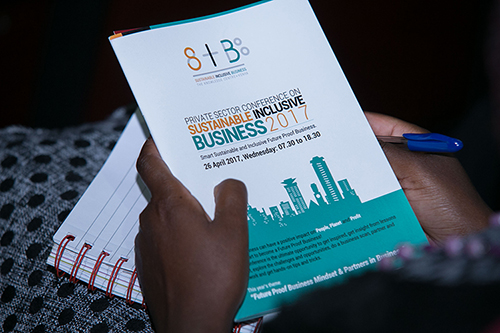 The concept of sustainable waste management needs to be demystified in order to achieve inclusive social, environmental and economic gains. We need to rekindle a new mind-set when we address issues related to waste. We have misplaced and misused a lot of resources just because we have named them waste instead of raw materials, commodities or resources that can be fed back into our production line.
The concept of sustainable waste management needs to be demystified in order to achieve inclusive social, environmental and economic gains. We need to rekindle a new mind-set when we address issues related to waste. We have misplaced and misused a lot of resources just because we have named them waste instead of raw materials, commodities or resources that can be fed back into our production line.
To create a sustainable waste management system, there are main steps that must be undertaken: –
- Awareness to empower consumers and businesses.
- Infrastructure improvement.
- Policies and regulations.
- Rethinking processes and material design.
Awareness to empower consumers and businesses
We have three categories of consumers when it comes to awareness. First, there are consumers who are responsible. These are however very few and often work in businesses that push for better business practices. The other type of consumers is informed but not practicing sustainability. They can only shift when the right policies and regulations are enforced. The larger group is of those who are willing to change but have no idea how to go about it. This is the group that needs to be empowered with knowledge on sustainable waste management practices. The call for awareness creation will help trigger the change of mind-set and inculcate the right knowledge and skill.
Push for campaigns that are driven by citizens and are achievable. The consumer needs to understand how, why and what. How, to become environment champions/ambassadors by being responsible for their own waste. Why, being irresponsible with waste is having a negative impact on the biodiversity. What, should be done to make a difference.
As a business owner, you need to understand that by taking care of the environment, you secure the future of your business. Understand the impact of the materials you put in the market; by re-thinking the processes and materials you use. You further need to influence the behaviour of your customers, agree on a take back scheme and give an incentive for any packaging materials brought back.
Infrastructure improvement
Without a proper coordinated infrastructure, it will be arduous to achieve sustainable waste management. First, we need to ensure a closed loop for all our waste streams by creating supportive infrastructure. We need regulations that foster separation at source, improved material recovery facilities (MRFs) else known as Urban Land Mines (ULMs) that support sorting, recycling and sustainable incineration processes.
It’s unfortunate that we push for a clean environment yet, we find linking bins in our public places like parks and streets in the CBD. Other places practically have no bins. The government needs to invest in the right infrastructure, and facilitate waste collection and separation through partnerships with the private sector.
Instead of having dumpsites alongside our roads, estates, in our drainage systems, river banks, forests etc, we should have set up infrastructure that will promote growth of urban Landmines where. This will ensure that end of life products are mined and used as raw material to produce other products and reduce constant extraction of virgin materials from our natural ecosystems.
Policies and Regulations
A lot of governments around the world are adopting legislations that target to propel sustainable waste management processes. In Kenya, we have made tremendous strides. In August, 2017, the ban on single used plastic carrier bags that has seen 80% success was just but the beginning for major changes. Since then, the government has committed to improve the waste management system in the country. In partnership with the private sector, Kenya has developed a National Sustainable Waste Management policy, Implemented the Ban on Single Use plastics in protected areas in Kenya beginning June 2020, the National Plastic Action Plan, and the Extended Producer Responsibility Organizations regulations. The EPR regulations state that any producer, manufacturer or importer is responsible for any product they introduce in the market.
Re-think processes and material design
Circular economy is all about reducing pollution and waste, keeping materials in circulation for as long as possible and regenerating our natural ecosystems. Understanding how parts of our ecosystems work and how they impact each other. One process can cause damage to another; for example, we mine oil and produce plastic out of it. We use and discard them unsustainably, ending up in waterways and oceans and later kill our marine life. Production processes can leave negative carbon foot print through carbon emissions that affect our planet. We recommend adopting the use of green energy instead of coal plants. We need to adopt circular economy business models that will lead to designing products for reuse and recyclability.
Re-thinking materials means we refuse unnecessary packaging for products, opt for reusable packaging instead of single use, designing long lasting products, design for repair ability, innovate alternatives to single use materials and design for recyclability.

Article By Pracksidis A. Wandera
Admin & Events Officer Sustainable Inclusive Business Kenya


